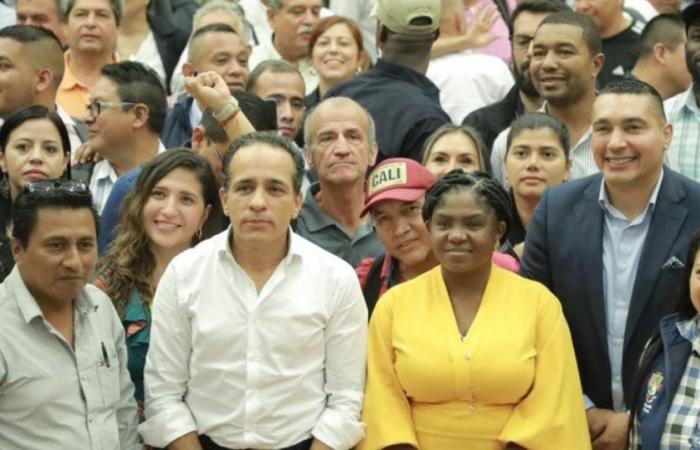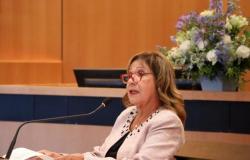This is a space for free and independent expression that exclusively reflects the points of view of the authors and does not compromise the thought or opinion of Las2orillas.
The department of Cauca, located in the southwestern part of Colombia, facing the Pacific Ocean, is today one of the territories most affected by the armed conflict, war and violence that is developing in its third cycle. There are almost 30 thousand square kilometers with more than 1 million 500 thousand inhabitants, distributed in 42 municipalities and 7 subregions that are very specific in their territorial forms and cultural and ethnic features.
Regarding the social, political and war conflicts in that region there are many diagnoses and studies of great significance that it is necessary to consult frequently to obtain insights that allow us to propose appropriate solutions and solutions.
Since 2022, with the access of President Gustavo Petro to the Casa de Nariño, a strategy against violence was formulated for the entire national territory known as Total Peace, which presented an alternative approach to the post-war or liberal peace model. of the UN, used in the dialogues, negotiations and agreements reached with the FARC in the second half of 2016 by the neoliberal government of Mr. Juan Manuel Santos, which have been a complete failure due to poor design and the attack of the extreme right from the year 2017.
Total Peace was offered as a public policy device marked by the progressive orientation of the Historical Pact government headed by Petro.
In essence, what we wanted is to discard the militaristic paraphernalia of the extreme right and the ambiguities of Third Way reformism, to overcome the structural causes of violence and the prolongation of the social and armed conflict that has struck for more than 70 years. the nation as a kind of civil war with terrible consequences due to the dispossession of more than 10 million hectares from peasants, the displacement of more than 8 million victims and daily violence with the extermination of social leaders and massacres of peasants, indigenous people and Afro-descendant communities.
In its almost 24 months of validity, Total Peace has implied the opening of dialogue and negotiation tables with the National Liberation Army/ELN, with the inheritances of the FARC of Manuel Marulanda: the FARC of the First Front of Ivan Lozada and with the 2 Marquetalia by Ivan Márquez.
The dialogues and negotiations with the aforementioned peasant guerrillas have presented the novelty of the adoption of early bilateral Ceasefires to alleviate the difficult humanitarian conditions of the most vulnerable populations in various territories such as Micay, northern Cauca, Choco, Putumayo , Arauca and Catatumbo.
In the case of Cauca, the highest priority for total peace has been the FARC headed by Ivan Lozada of the First Front.
The agreements reached with this guerrilla actor have been based on the principle of immediately executing what was agreed at the Dialogue Table. This is how it was agreed to jointly build an initial territorial transformation plan for the Micay Canyon made up of the municipalities of El Tambo, López de Micay and Argelia.
Unfortunately, this working letter was affected by the lack of knowledge, on the part of senior government officials, of bilaterality as a guiding principle established in the development of each progress made at the Roundtable, which translated into a deterioration of the dialogues that were contaminated by mistrust.
In the case of Cauca, the ongoing war has the fronts and columns of the FARC as its main protagonists. I am referring to the Dagoberto Ramos columns (located in the north of the department), the Jaime Martínez columns (which operate in the west of the region), the Carlos Patiño columns (located in the Micay canyon), the Rafael Aguilera columns (with presence in Buenaventura), to the Franco Benavides, to the Urias Rondon, to the Adán left and to the Ismael Ruiz.
There are almost 3 thousand combatants.
The Armed Forces have nearly 10,000 units of soldiers and police in Cauca, equipped with modern war and intelligence systems.
With the failure of the Micay Plan and the suspension of the bilateral Ceasefire in the departments of Cauca, Valle del Cauca and Nariño, the war has intensified in recent weeks with attacks on police stations and combats between the army and the columns guerrillas
Regarding the causes of Caucan violence, it has been pointed out that coca crops, marijuana crops and the drug trade are the main fuel; although deeper down there is the concentration of rural property, the extreme poverty of the population, sugar cane crops, illegal mining and the corruption of the hegemonic political caste in Popayán, as central elements of the upheaval exacerbated in recent days. .
I do not believe that the solution consists of organizing more war plans and outlining new scenarios of endless combat to attempt a forceful pacification of Cauca. What all this entails is more violation of human rights, more displacement and more social and political deterioration.
Cauca civil society, in its various expressions, must make its voices heard and prepare a large mobilization for next July 20 in Popayán as a constituent act of peace that calls on the central actors of the regional war to dialogue and agree on solutions.






